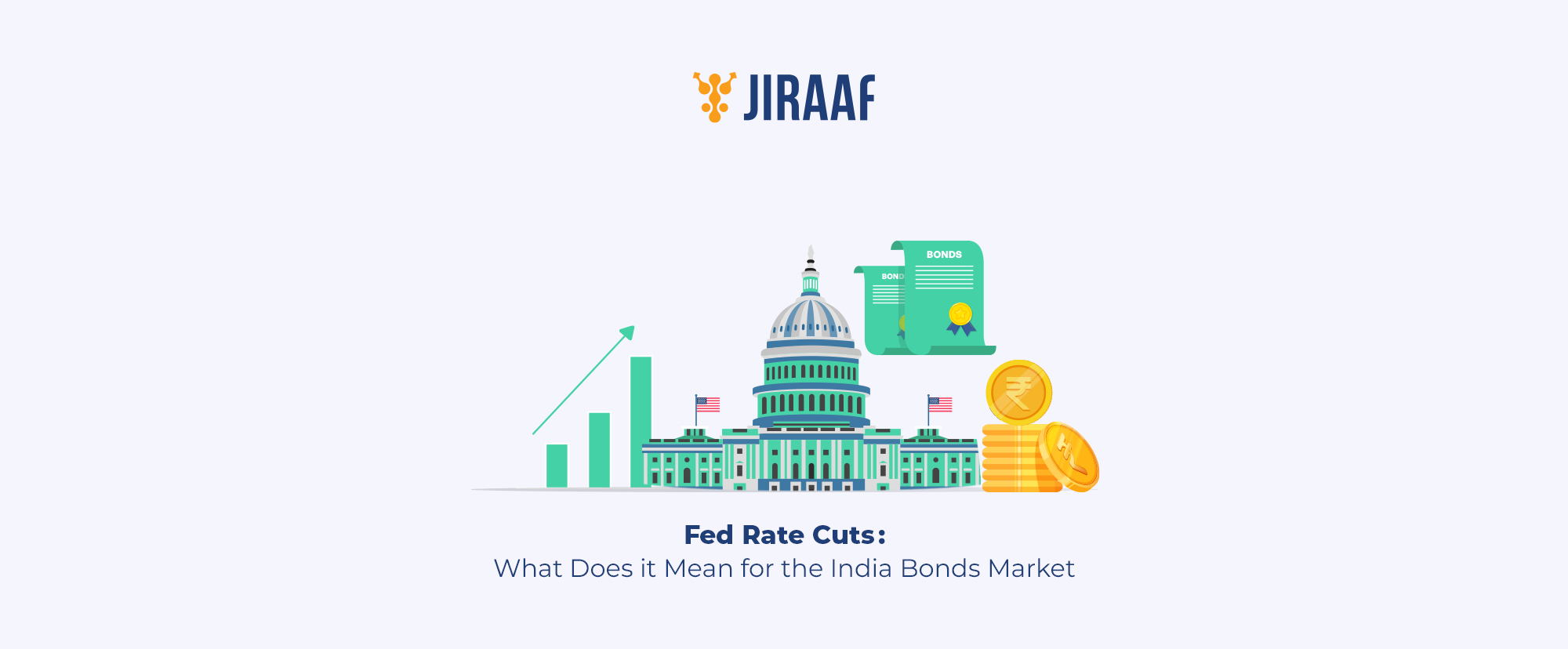In a surprising move, the U.S. Federal Reserve has announced a 50 basis points (BPS) cut to interest rates, stirring excitement and speculation in financial markets worldwide. Surprising because, based on the indications, most analysts were expecting a rate cut of 25 BPS only. This decision, aimed at boosting economic activity amid persistent inflationary pressures, is expected to have far-reaching implications, particularly in the debt markets. As analysts and investors process this news, the question on everyone’s mind is what this means for global liquidity, borrowing costs, and the interconnectedness of the world’s economies.
What to Expect Globally and in India
The Fed’s decision to cut interest rates marks a significant pivot in its monetary policy. After a series of aggressive rate hikes designed to combat inflation, the US central bank’s latest move reflects a recognition of slowing economic growth and the need for support. Behind the Fed’s decision to make a jumbo cut are its efforts to juggle its so-called “dual mandate” to maintain stable prices, or in other words, to keep inflation low, and, to ensure full employment. As the dust settles after this announcement, markets are buzzing with speculation about improved liquidity and lower borrowing costs for both businesses and consumers as also the potential for a global rally in debt markets. In the opinion of experts, one further rate cut of 25-50 bps this financial year cannot be ruled out in India.
As an immediate aftermath of the rate cut, a boost in investor sentiment is predicted. Lower interest rates generally lead to increased borrowing, as all types of loans become cheaper. This dynamic encourages consumer spending and business investment and enhances employment, fostering a more vibrant economic environment. As liquidity improves, we can expect a shift in market dynamics, particularly in the bond sector.
Sectoral Impact
Different sectors will respond uniquely to the US Fed’s rate cut. The real estate sector could see an upswing in activity as mortgage rates decrease, leading to increased home sales and construction projects. Similarly, consumer spending may rise, benefiting utilities, retail and consumer goods companies. Financial institutions, however, may face pressure on their net interest margins temporarily, as lower rates reduce the gap between what they pay depositors and what they earn from loans. This happens because they must pay interest on existing term deposits at the contracted rate, while the interest rates on loans advanced by them are reduced for all the loans, existing as well as new. However, financial institutions will see an uptick on new consumer and commercial loans when borrowing rates go down. The sectors that rely heavily on debt, such as utilities and telecommunications, may find it easier to refinance existing debt at lower rates, leading to enhanced profitability.
Impact on the Bond Market
Interest rates and bond prices have an inverse relationship; when interest rates fall, existing bonds with higher interest payments become more attractive. This scenario could lead to a rally in the bond market, with investors flocking to both government and corporate bonds. With lower borrowing costs, companies may issue new debt instruments to finance expansion, further fueling the bond market’s growth.
How Interest Rates Affect Bond Performance?
Interest rates fundamentally influence bond performance. When rates rise, bond prices typically decline, as new issues come to market with higher yields. Conversely, when the rates fall, the yield on new bonds falls, making existing bonds more valuable. Moreover, as liquidity improves, we might see a decrease in credit spreads. This means that the difference in yields between government bonds and corporate bonds narrows, reflecting increased confidence in the creditworthiness of corporations.
Impact on the Indian Bond Market
Turning our attention to India, the U.S. rate cut has significant implications for the Indian bonds market. Typically, a rate cut in the U.S. can lead to a reallocation of investment flows, with capital potentially moving toward emerging markets like India in search of higher yields. This influx can strengthen demand for Indian bonds, leading to lower yields and improved liquidity.
The U.S. Rate Cut and its Potential Impact on India’s G-Sec Yields
India’s 10-year g-sec yield, which has already dropped below 6.8%, could fall further, benefiting both government borrowing and the corporate bond market. Lower borrowing costs could encourage Indian banks and infrastructure companies to issue long-term bonds, increasing fund mobilization options.
If the RBI follows US Fed’s action and reduces the interest rates, the yield on new bond will fall, making existing bonds more valuable and hence this might be a good time to invest in medium and long duration bonds to take advantage of high interest rates and potential capital appreciation.
Impact on India’s Forex Inflows and Outflows
In terms of foreign exchange, the U.S. rate cut could lead to increased forex inflows into India as investors seek opportunities in a high-growth economy. However, it could also lead to currency volatility, as fluctuations in capital flows may impact the Indian rupee. If investors pull out of U.S. assets in favor of higher-yielding Indian assets, it could strengthen the rupee, benefiting importers but posing challenges for exporters.
Future Outlook
As we look ahead, the expectation is that the U.S. Fed’s rate cut could just be the beginning. Depending on economic indicators such as inflation, employment rates, and GDP growth, further cuts may be on the horizon. This prospect could maintain investor interest in the bond market and support ongoing economic recovery efforts.
The Fed’s actions will undoubtedly influence global monetary policy. Central banks in other economies may feel pressured to follow suit to maintain competitiveness, further fueling a potential rally in global debt markets.
RBI’s Potential Response to the U.S. Fed’s Rate Cut
Reserve Bank of India (RBI) will navigate these developments carefully. While a conducive global environment could warrant a rate cut, domestic factors such as inflationary pressures and growth indicators will also play a crucial role in its monetary policy decisions. The RBI’s Monetary Policy Committee (MPC) will meet on October 7-9 and decide on the possible rate cuts. India has generally remained well insulated from rest of the world’s rate movements for now and RBI has left the repo rate unchanged at 6.50% as it strives to keep inflation under control. The tremendous rally in risk assets plus projected economic growth keep an inflationary underlying force in the Indian economy. In light of this, whether RBI will follow the US FED rate cut remains to be seen. While RBI is likely to make its own independent decisions, the chances of a 25 bps rate cut in December or the last quarter of FY 24-25 cannot be entirely ruled out, especially if food inflation remains under control.
What Does it Mean for You as a Bond Investor?
The recent 50 bps rate cut by the U.S. Federal Reserve is poised to create waves across global financial markets. As investors anticipate a potential rally in debt markets and improved liquidity, the implications extend beyond U.S. borders, impacting sectors and economies worldwide, including India. While the future remains uncertain, one thing is clear: the interconnectedness of today’s financial systems means that actions taken in one part of the world can have profound effects elsewhere. The coming months will be critical as markets adjust to this new economic landscape and these dynamics unfold.
Investment Strategies for Bond Investors
With expectations ripe in terms of RBI following US Fed’s action and reduces the interest rates before March 2025, now is the best time to invest in bonds to take advantage of current high interest income rates and potential capital appreciation. As a strategy, it is recommended to investors to increase their exposure to short, medium and long-duration corporate bonds for stability and high yields, helping to offset any risk related to the future interest rate changes or shift in economic conditions.



